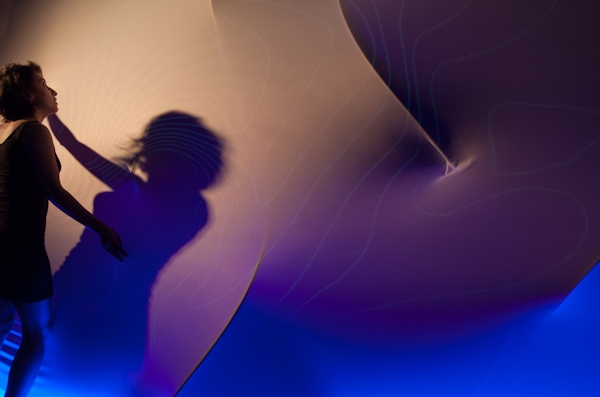[From Fast Company’s Co.Exist, where the story includes more pictures and a 2:33 minute video; see also Behnaz Farahi’s web pages for this version and the earlier version of the project]
When You Move Your Hand, This Room Changes Shape
By covering walls in Spandex and using a motion sensing game controller, a designer has created a magical place that is an extension of the human mind and body.
Adele Peters
June 23, 2014
We’re used to using gestures like swiping and tapping to control smartphone apps. But could we use the same movements to change the physical world around us? In a project called Breathing Wall, University of Southern California student Behnaz Farahi experiments with what it might look like if walls in a room changed shape whenever we moved our hands.
“I am exploring what the future of our living environment could look like,” Farahi says. “What is the quality of the interaction we would have with our surrounding environment? How would it look to live within an environment that is part of an extension of our body?”
In her experiment, Farahi set up a small room with Spandex-covered walls and hooked up a motion-sensing game controller. Every time a visitor swiped or tapped or made a circle with the controller, the walls shifted in response.
The technology isn’t quite there to make this a reality in your home yet. “Hand and figure gesture design is still in the early ages,” Farahi explains. “Another challenge would be how we can create more collaborative environment in which a group of people can involve and interact with the environment, not just one-to-one interaction.”
But someday soon, the designer thinks that we could start to have a relationship with the buildings around us, training structures to communicate with humans. And eventually we may be able to make rooms transform without a controller in hand.
“I really think in the future it may even be possible to design a direct interface which allows users to interact with their environments without any intermediary mechanism,” says Farahi. “There would be no button, no mouse. Such interfaces will make control of our physical environment much easier and smarter, especially for disabled or handicapped users.”
